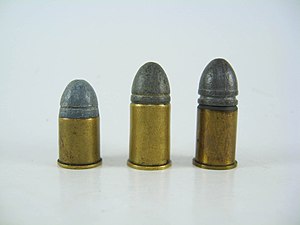
The Webley Revolver was, in various designations, a standard issue service pistol for the armed forces of the United Kingdom, and countries of the British Empire and the Commonwealth of Nations, from 1887 to 1970.

The .22 Remington Jet is a .22 in (5.6mm) American centerfire revolver and rifle cartridge.

.455 Webley is a British handgun cartridge, most commonly used in the Webley top break revolvers Marks I through VI. It is also known as ".455 Eley" and ".455 Colt".

The Enfield Revolver was a self-extracting British handgun designed and manufactured at the government-owned Royal Small Arms Factory in Enfield, initially in the .476 calibre.
The .32 Long Colt is an American centerfire revolver cartridge.
The .50-110 WCF in modern 1886 Winchesters with modern steel barrels is the most powerful lever-action cartridge, with up to 4,000 foot-pounds (5,400 J) of energy.

The .44 S&W American is an American centerfire revolver cartridge.

The .44 Colt is an American centerfire revolver cartridge that was produced commercially from 1871 to 1940.

The .476 Enfield, also known as the .476 Eley, .476 Revolver, and occasionally .455/476, is a British centrefire black powder revolver cartridge. The Enfield name derives from the location of the Royal Small Arms Factory at Enfield Lock, the armoury where British military small arms were produced, while Eley was a British commercial brand. Used in the Enfield Mk II revolver, the Mk III variant was introduced by the British Army in 1881, supplanting the earlier .476 Enfield Mark I and II cartridges, which in turn had replaced the .450 Adams cartridges, all of which also used black powder propellant.
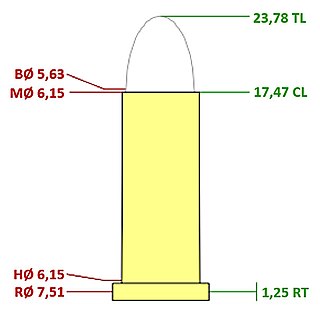
The .22 Remington Automatic is a .22in (5.6mm) American rimfire rifle cartridge.

The .22 Extra Long is a .22 in (5.6 mm) American rimfire rifle and handgun cartridge.
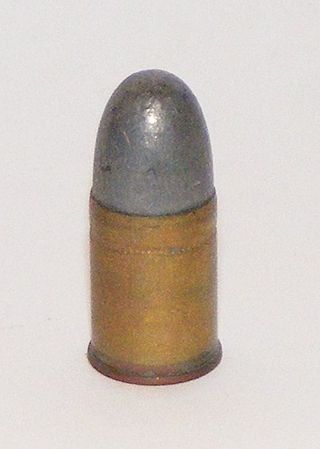
The .450 Adams was a British black powder centrefire revolver cartridge, initially used in converted Beaumont–Adams revolvers, in the late 1860s. Officially designated .450 Boxer Mk I, and also known variously as the .450 Revolver, .450 Colt, .450 Short, .450 Corto, and .450 Mark III, and in America as the .45 Webley, it was the British Army's first centrefire revolver round.

The British Bull Dog was a popular type of solid-frame pocket revolver introduced by Philip Webley & Son of Birmingham, England, in 1872, and subsequently copied by gunmakers in continental Europe and the United States. It featured a 2.5-inch (64 mm) barrel and was chambered for .442 Webley or .450 Adams cartridges, with a five-round cylinder. Webley produced smaller scaled .320 Revolver and .380 calibre versions later, but did not mark them with the British Bull Dog name.
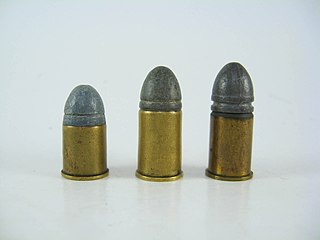
The .44 Bull Dog was an American centerfire revolver cartridge produced from the 1880s until the 1930s.
The .25 Stevens Short was an American rimfire rifle cartridge, introduced in 1902.
The .25 Stevens was an American rimfire rifle cartridge. To differentiate from the related .25 Stevens Short it is sometimes also referred to as .25 Stevens Long.
The .25-21 Stevens was an American centerfire rifle cartridge.
The .50 Remington Navy is a .50 in (12.7 mm) American rimfire handgun cartridge.
The .25 Short is a .25 in (6.35 mm) American rimfire handgun cartridge.
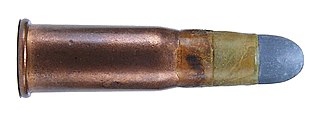
The .41 Swiss is a .415 in (10.54 mm) Swiss military rimfire bottlenecked intermediate rifle cartridge.
